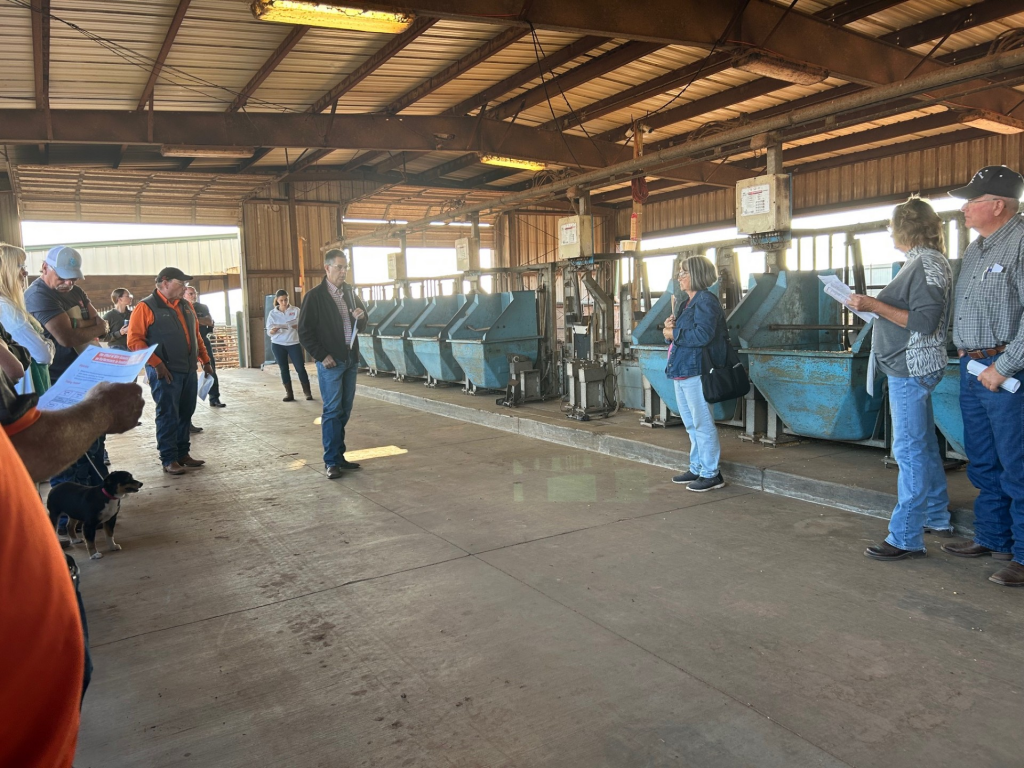
Today’s beef buzz features comments from Beef Cattle Specialist Dr. David Lalman of Oklahoma State University, who recently discussed cow size, genetics, and management decisions for today’s cow-calf producers during the OSU Field Day with Oklahoma Farm Report’s Carli Davenport. Lalman explained that cow size remains a key factor in determining profitability for operations with limited grazing land. “There’s a strong genetic correlation for yearling weight growth and carcass weight and mature cow size,” Lalman said. “And so if you have a restricted land base, you know, the bigger your cows are, the fewer cows you can run if you’re going to put the same grazing pressure on your land.” Fewer cows mean fewer calves to sell, which can “probably” lower overall profitability for weaning-based systems.
Dr. Lalman emphasized that while larger cows can produce heavier calves, they also require more feed resources. “There’s also a strong correlation between mature cow size and forage intake,” he explained. This relationship makes balancing growth potential with resource availability essential for producers. Managing that tradeoff, Lalman said, is “why it’s important” to consider cow size carefully when making breeding and selection decisions.
Turning to genetics, Lalman shared positive findings from OSU’s systems project, which demonstrated that Expected Progeny Differences (EPDs) remain reliable predictors of growth. “One thing that our systems project is showing us is that clearly, the EPDs designed to measure and predict differences between sires for growth is working, and it’s working well if we track those animals through the finishing phase,” he said. Lalman cited a project example showing “a difference of about 80 pounds” in yearling weight EPDs between sires, which translated into “a 100-pound difference in the finish weight of the cattle that we have measured directly.”
However, Lalman cautioned that the industry’s continued selection for growth may come with health tradeoffs. “Other projects, especially looking at bovine congestive heart failure, which is gradually creeping up in the cattle industry, have shown that continued aggressive selection for growth, increased carcass weight are related to increased risk of congestive heart failure,” he said. While he noted that the number of deaths remains low, “it’s creeping up over time.” His team is also studying “metabolic markers for stress,” hoping to uncover mechanisms behind cattle more susceptible to stress-related conditions.
When asked about calving seasons, Lalman highlighted the challenges of managing fall-calving herds. “I tell you, one of the real challenges with that is calving in the heat,” he said. The extreme late-summer conditions, combined with risks like “this new world screw worm potential,” make fall calving a concern for herd health. “You’ve got a baby calf there in the late heat of the summer that has a raw navel that would be very susceptible to that problem,” Lalman explained. He added that the “stress on a female in late gestation” during hot weather could influence “feed yard gain and feed efficiency” later on, something his ongoing OSU project aims to measure over time.

















